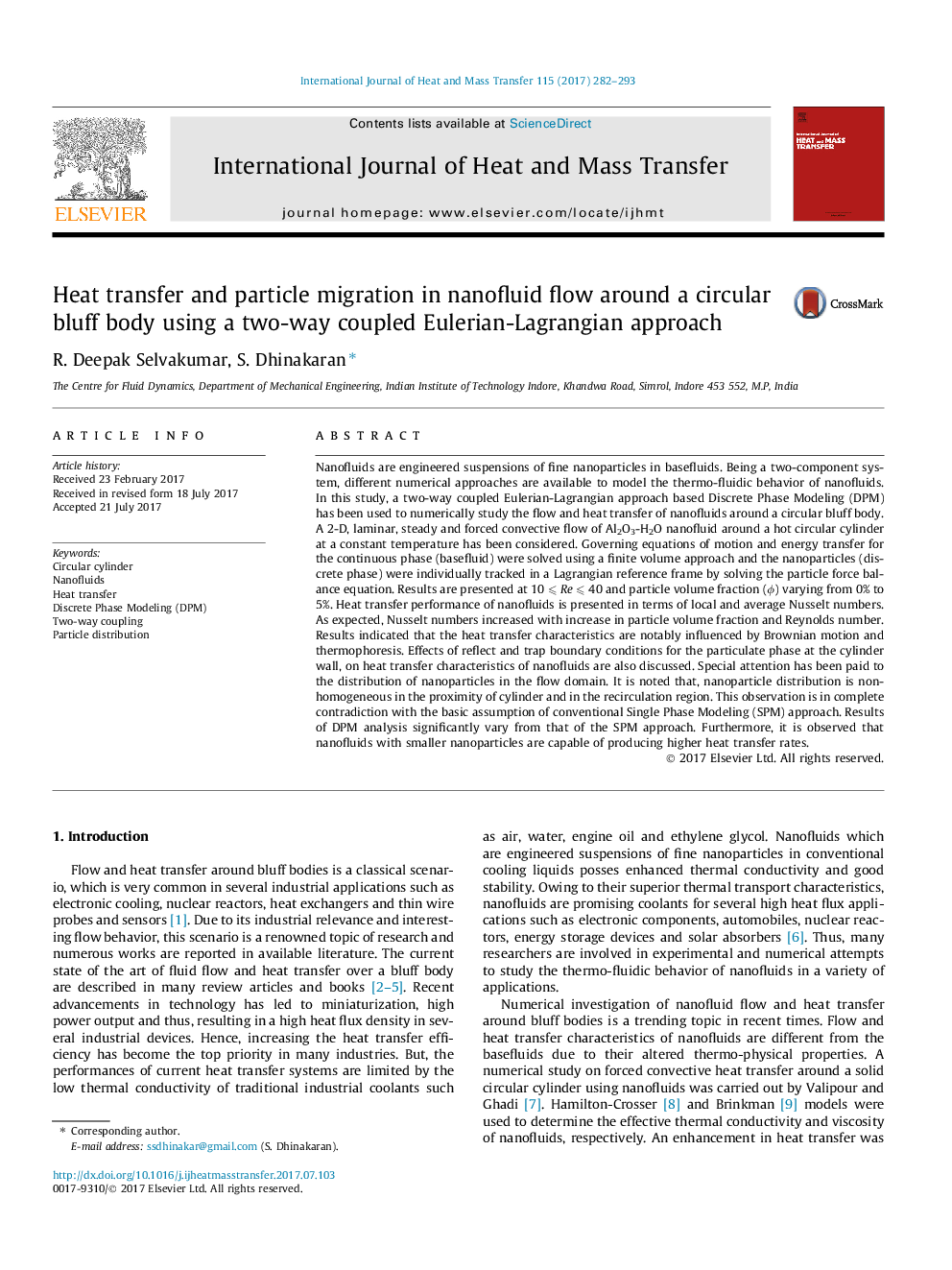| کد مقاله | کد نشریه | سال انتشار | مقاله انگلیسی | نسخه تمام متن |
|---|---|---|---|---|
| 4993972 | 1458025 | 2017 | 12 صفحه PDF | دانلود رایگان |
عنوان انگلیسی مقاله ISI
Heat transfer and particle migration in nanofluid flow around a circular bluff body using a two-way coupled Eulerian-Lagrangian approach
ترجمه فارسی عنوان
انتقال حرارت و مهاجرت ذرات در جریان نانوسیم در اطراف یک بدن غوطهور دایره ای با استفاده از یک رویکرد دو طرفه رویکرد اویلر-لاگرانژ
دانلود مقاله + سفارش ترجمه
دانلود مقاله ISI انگلیسی
رایگان برای ایرانیان
کلمات کلیدی
موضوعات مرتبط
مهندسی و علوم پایه
مهندسی شیمی
جریان سیال و فرایندهای انتقال
چکیده انگلیسی
Nanofluids are engineered suspensions of fine nanoparticles in basefluids. Being a two-component system, different numerical approaches are available to model the thermo-fluidic behavior of nanofluids. In this study, a two-way coupled Eulerian-Lagrangian approach based Discrete Phase Modeling (DPM) has been used to numerically study the flow and heat transfer of nanofluids around a circular bluff body. A 2-D, laminar, steady and forced convective flow of Al2O3-H2O nanofluid around a hot circular cylinder at a constant temperature has been considered. Governing equations of motion and energy transfer for the continuous phase (basefluid) were solved using a finite volume approach and the nanoparticles (discrete phase) were individually tracked in a Lagrangian reference frame by solving the particle force balance equation. Results are presented at 10⩽Re⩽40 and particle volume fraction (Ï) varying from 0% to 5%. Heat transfer performance of nanofluids is presented in terms of local and average Nusselt numbers. As expected, Nusselt numbers increased with increase in particle volume fraction and Reynolds number. Results indicated that the heat transfer characteristics are notably influenced by Brownian motion and thermophoresis. Effects of reflect and trap boundary conditions for the particulate phase at the cylinder wall, on heat transfer characteristics of nanofluids are also discussed. Special attention has been paid to the distribution of nanoparticles in the flow domain. It is noted that, nanoparticle distribution is non-homogeneous in the proximity of cylinder and in the recirculation region. This observation is in complete contradiction with the basic assumption of conventional Single Phase Modeling (SPM) approach. Results of DPM analysis significantly vary from that of the SPM approach. Furthermore, it is observed that nanofluids with smaller nanoparticles are capable of producing higher heat transfer rates.
ناشر
Database: Elsevier - ScienceDirect (ساینس دایرکت)
Journal: International Journal of Heat and Mass Transfer - Volume 115, Part B, December 2017, Pages 282-293
Journal: International Journal of Heat and Mass Transfer - Volume 115, Part B, December 2017, Pages 282-293
نویسندگان
R. Deepak Selvakumar, S. Dhinakaran,
